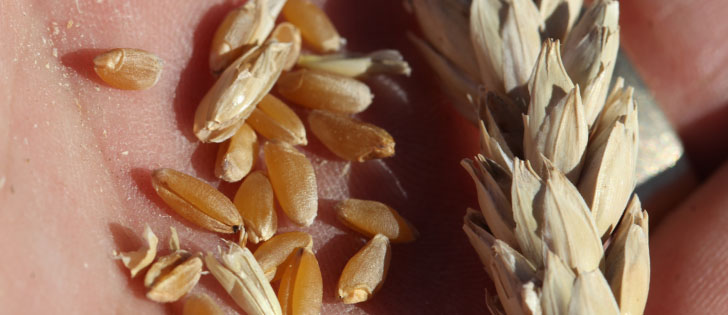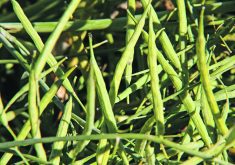Removing mature cows from the herd sooner could earn producers extra cash.
Alberta Agriculture research shows managing cows over winter accounts for about 65 percent of the production costs so downsizing the herd can reduce expenses.
“There could be people either trying to decide what to do with their cows this fall or trying to figure out how they are going to feed them,” said researcher Reynold Bergen of Alberta Beef Producers.
Cow prices are generally higher in spring than in fall. That’s why many producers retain cows over winter and sell in spring.
Read Also

American researchers design a tomato plant that talks
Two students at Cornell University have devised a faster way to detect if garden plants and agricultural crops have a sufficient supply of nitrogen.
“That would work if you have enough feed and the weather is easy, but if you have either one of those things going wrong, it won’t work for you.”
Bergen tracked cow prices since 2002 and found that selling cows in November instead of August can cost producers nearly $6 per head per day.
When the threat of BSE closed the U.S. border to animals older than 30 months from 2003 to 2007, cow values were low so there was little profit in feeding longer.
Grain prices also went up during that period so the cost of fattening cows was high and profits almost non-existent, Bergen said.
This fall, the strong demand for lean cow trim beef for grinding should support cow prices. However, poor pastures and expensive feed means cows may be culled again this year, forcing prices lower.
Alberta Agriculture beef specialist Ken Zeigler said producers should realize it is better to ship cows a year sooner than a year later.
“As cows get older, the reality is their calves become smaller and smaller,” he said.
Dry conditions in Alberta this year, resulting in expensive hay, prompted people to start selling cows in June.
“The industry does not have the emotional resiliency this year that they would have had in previous feed shortages,” Zeigler said.
Dale Kaliel, economist with Alberta Agriculture, said individual production practices often influence how people get rid of cows. Producers who have to round up cows on large ranges may stick to a more disciplined marketing plan to capture better prices.
Each operation has to calculate its own cost of production and overall business plan.
“Price is something you generally have no control over, other than you generally have an understanding of the range prices may be at a future point in time,” Kaliel said.
Careful calculations
Producers should carefully calculate the cost of retaining cows.
“Very few people put a pencil to paper and say, even in a rudimentary fashion, ‘here’s the profit and loss associated with these short term and where it will leave me strategically in the long term’,” he said.
Producers who cull should have a plan to ensure restocking the herd later is not more expensive than feeding the cows through the normal period.
“Before you make any of those decisions, you have to chart out long term profitability of your business,” Kaliel said.
People tend to have a negative attitude during hard times but when making culling decisions, producers should review their reasons for removing animals from the herd.
Timely cow marketing
- Almost 50 percent more cows are processed in Alberta in November than in August.
- Alberta cow prices are about 15 percent lower in November than August. Average D1 and D2 cow prices have never been higher in November than in August over the past 19 years (except 2003).
- Cow carcass weights are five percent lower in November than August.
- There are five percent fewer D1 and D2 carcasses (medium to excellent muscling) and 15 percent more D3 carcasses (deficient muscling) in November than August. A D3 carcass is worth about 6.5 cents per pound less on a live weight basis. A D4 carcass (very fat) is worth about 1.5 cents per lb. less than a D3 carcass.
- More carcasses are condemned for being extremely thin or showing signs of rapid fat loss in November than August. Some packers deduct a $150 fee to discourage delivery of these animals to their plants. Some auction marts have introduced similar fees.















